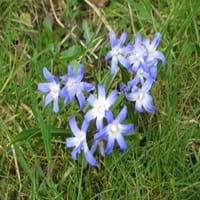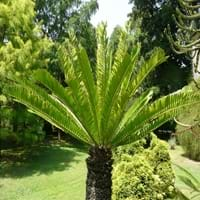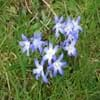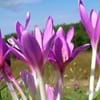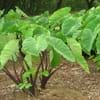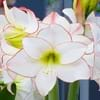Life Span
Perennial
Biennial
Type
Bulb or Corm or Tuber
Palm or Cycad
Origin
Mediterranean, Turkey
South Africa
Types
Not Available
Alexandria cycad, Encephalartos caffer, Encephalartos concinnus
Number of Varieties
Not Available
Habitat
meadows, Terrestrial
Riverbanks, Rocky areas, Scrubs
USDA Hardiness Zone
3-9
9-12
Sunset Zone
21,22
H1, H2, 18, 19, 20, 21, 22, 23, 24
Habit
Clump-Forming
Clump-Forming
Flower Color
White, Blue, Pink, Violet
Not Available
Flower Color Modifier
Bicolor
Bicolor
Fruit Color
Not Available
Not Available
Leaf Color in Spring
Green
Green, Dark Green
Leaf Color in Summer
Light Green
Dark Green
Leaf Color in Fall
Several shades of Green
Dark Green
Leaf Color in Winter
Light Green
Dark Green
Leaf Shape
Long Linear
Pinnate
Plant Season
Spring, Winter
Spring, Summer, Fall, Winter
Sunlight
Full Sun, Partial Sun
Full Sun, Partial Sun, Partial shade
Type of Soil
Loam
Loam, Sand
The pH of Soil
Acidic, Neutral, Alkaline
Acidic, Neutral, Alkaline
Soil Drainage
Well drained
Well drained
Bloom Time
Early Spring, Late Winter
Early Summer, Summer
Tolerances
Drought
Drought
Where to Plant?
Container, Ground, Pot
Container, Ground, Pot
How to Plant?
From bulbs, Seedlings
Seedlings
Plant Maintenance
Medium
Medium
Watering Requirements
Average Water Needs, Do Not over Water, Do not water frequently, Keep the ground moist but not water-logged, Never Over-water
Needs very little water
In Summer
Lots of watering
Lots of watering
In Spring
Moderate
Moderate
In Winter
Average Water
Average Water
Soil pH
Acidic, Neutral, Alkaline
Acidic, Neutral, Alkaline
Soil Type
Loam
Loam, Sand
Soil Drainage Capacity
Well drained
Well drained
Sun Exposure
Full Sun, Partial Sun
Full Sun, Partial Sun, Partial shade
Pruning
Remove damaged leaves, Remove dead branches, Remove dead leaves
Remove crossing or rubbing branches, Remove damaged leaves, Remove dead branches, Remove dead leaves, Remove dead or diseased plant parts
Fertilizers
All-Purpose Liquid Fertilizer
All-Purpose Liquid Fertilizer
Pests and Diseases
Red blotch
Red blotch
Plant Tolerance
Drought
Drought
Flowers
Showy
Insignificant
Flower Petal Number
Single
Not Available
Foliage Texture
Fine
Bold
Foliage Sheen
Matte
Glossy
Attracts
Bees, Flying insects
Birds, Not Available
Allergy
Skin rash
Not Available
Aesthetic Uses
Beautification, Bouquets, Ground Cover, Showy Purposes
Showy Purposes
Beauty Benefits
Not Available
Not Available
Environmental Uses
Air purification
Air purification, Shadow Tree, Windbreak
Medicinal Uses
No Medicinal Use
Not Available
Part of Plant Used
Flowers
Leaves, Seeds, Stem
Other Uses
Decoration Purposes, Showy Purposes, Used as Ornamental plant
Used As Food, Used as Ornamental plant, Used for its medicinal properties
Used As Indoor Plant
Yes
No
Used As Outdoor Plant
Yes
Yes
Garden Design
Alpine, Container, Foundation, Lawns and Turf, Mixed Border, Rock Garden / Wall, Wildflower
Feature Plant, Foundation, Mixed Border, Tropical
Botanical Name
CHIONODOXA
ENCEPHALARTOS altensteinii
Common Name
Chionodoxa, Glory-of-the-Snow
Bread Tree, Prickly Cycad
In Hindi
Chionodoxa
Bread Tree
In German
Chionodoxa
Brotbaum
In French
Chionodoxa
Bread Arbre
In Spanish
Chionodoxa
Árbol del pan
In Greek
Chionodoxa
ψωμί Δέντρο
In Portuguese
Chionodoxa
Árvore de pão
In Polish
Chionodoxa
chleb Drzewo
In Latin
Chionodoxa
panis ligno
Phylum
Platyhelminthes
Tracheophyta
Class
Cestoda
Equisetopsida
Family
Liliaceae
Cycadaceae
Genus
Chionodoxa
Encephalartos
Clade
Angiosperms, Monocots
Not Available
Tribe
Not Available
Not Available
Subfamily
Not Available
Not Available
Season and Care of Chionodoxa and Bread Tree
Season and care of Chionodoxa and Bread Tree is important to know. While considering everything about Chionodoxa and Bread Tree Care, growing season is an essential factor. Chionodoxa season is Spring and Winter and Bread Tree season is Spring and Winter. The type of soil for Chionodoxa is Loam and for Bread Tree is Loam, Sand while the PH of soil for Chionodoxa is Acidic, Neutral, Alkaline and for Bread Tree is Acidic, Neutral, Alkaline.
Chionodoxa and Bread Tree Physical Information
Chionodoxa and Bread Tree physical information is very important for comparison. Chionodoxa height is 10.20 cm and width 5.10 cm whereas Bread Tree height is 290.00 cm and width 240.00 cm. The color specification of Chionodoxa and Bread Tree are as follows:
Chionodoxa flower color: White, Blue, Pink and Violet
Chionodoxa leaf color: Green
Bread Tree flower color: Not Available
- Bread Tree leaf color: Green and Dark Green
Care of Chionodoxa and Bread Tree
Care of Chionodoxa and Bread Tree include pruning, fertilizers, watering etc. Chionodoxa pruning is done Remove damaged leaves, Remove dead branches and Remove dead leaves and Bread Tree pruning is done Remove crossing or rubbing branches, Remove damaged leaves, Remove dead branches, Remove dead leaves and Remove dead or diseased plant parts. In summer Chionodoxa needs Lots of watering and in winter, it needs Average Water. Whereas, in summer Bread Tree needs Lots of watering and in winter, it needs Average Water.
